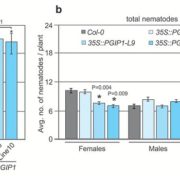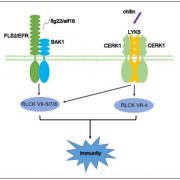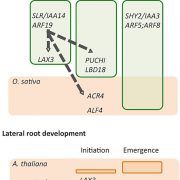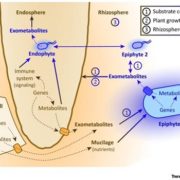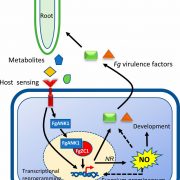Friend or Foe? How fungi switch between helping and harming plants
 Plants coexist and interact with various microorganisms in the soil environment, including fungi. These associated fungi can not only cause diseases but also establish symbiotic interactions that boost plant health. This is the case of the endophyte Colletotrichum tofieldiae, where some strains can improve the plant’s nutritional status by transferring phosphorus from the soil, while others can exhibit pathogenic behavior. In this study, Ujimatsu and colleagues investigated the genetic causes behind this continuum between beneficial and pathogenic lifestyles. They discovered that a transcription factor called CtBOT6, part of a gene cluster involved in producing sesquiterpene metabolites that increase fungal virulence, acts like a molecular switch. Activation of this transcription factor in pathogenic isolates drives infection, while it remains inactive in beneficial ones. When CtBOT6 is overexpressed in normally non-expressing (beneficial) strains, it transforms the fungus into a necrotrophic pathogen. This shift activates virulence genes and triggers the production of a wide array of fungal compounds. The newly pathogenic fungus can now not only colonize roots but also invade and reproduce in leaves. These findings help explain how some endophytes switch between being plant allies and aggressors, providing insight into the genetic mechanisms that distinguish pathogenic and beneficial fungal lifestyles. (Summary by Carlos González Sanz @carlosgonzsanz) Curr. Biol. 10.1016/j.cub.2025.03.026
Plants coexist and interact with various microorganisms in the soil environment, including fungi. These associated fungi can not only cause diseases but also establish symbiotic interactions that boost plant health. This is the case of the endophyte Colletotrichum tofieldiae, where some strains can improve the plant’s nutritional status by transferring phosphorus from the soil, while others can exhibit pathogenic behavior. In this study, Ujimatsu and colleagues investigated the genetic causes behind this continuum between beneficial and pathogenic lifestyles. They discovered that a transcription factor called CtBOT6, part of a gene cluster involved in producing sesquiterpene metabolites that increase fungal virulence, acts like a molecular switch. Activation of this transcription factor in pathogenic isolates drives infection, while it remains inactive in beneficial ones. When CtBOT6 is overexpressed in normally non-expressing (beneficial) strains, it transforms the fungus into a necrotrophic pathogen. This shift activates virulence genes and triggers the production of a wide array of fungal compounds. The newly pathogenic fungus can now not only colonize roots but also invade and reproduce in leaves. These findings help explain how some endophytes switch between being plant allies and aggressors, providing insight into the genetic mechanisms that distinguish pathogenic and beneficial fungal lifestyles. (Summary by Carlos González Sanz @carlosgonzsanz) Curr. Biol. 10.1016/j.cub.2025.03.026


